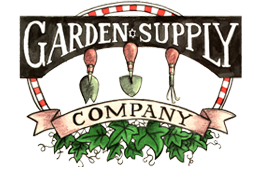If you know much about flowers, you know we're not talking about baby food. When we say "Oh, (Gerbera) Baby!" we're referring to some of our favorite daisies. Just take a look at the pretty faces on these babies!
Beauty in Chaos: The Basics of Cottage Gardening
A cottage garden is a colorful tangle of tumbling flowers and plants that provides a cheerful welcome for visitors. This gardening style is an exercise in creativity and an expression of individuality, with each garden being completely unique. If you've ever thought about starting a cottage garden, here are some tips to get you started: The basics
IMG_20140802_112704403_1 (1)
Invest in your soil: Soil quality directly affects plant quality, so make sure soil amendment is one of your first undertakings. Soil is filled with organisms that are essential to healthy plant growth, and adding manure or compost is a perfect way to ensure plants have the nutrients they need.
Consider light conditions: Keep in mind that plants in their ideal conditions are going to thrive and require less upkeep. In general, flowering plants need more sunlight than foliage plants. Have a good idea of how much sun your garden area gets and at what times of the day: is it morning or afternoon sun? Some plants may prefer one or the other.
Start with a small area: This allows you to experiment with various plants and slowly build a more intricate garden. You can always move things later if you change your mind.
Tall in the back, short in the front: Be sure to position plants with regard to their height so that there is visual interest to pull the eye up and down. Also, take spacing needs into account so that full-grown plants don’t end up crowding each other.
Plant considerations
There are no right or wrong plant choices for this type of garden. Cottage gardens have a soft, romantic feel, which comes from classic flowers. Some traditional cottage garden plant examples are: hollyhocks, daisies, phlox, foxglove, roses and lavender. Don’t overlook fruits, herbs and vegetables as options: not only are they ornamental, but they are a return to the original purpose of cottage gardens, which was to produce food and flowers for a family.
beautifulflowers
It’s important to consider plant textures and shapes. Part of what makes a cottage garden exciting is the artful mixture of a variety of plant shapes and hues. Varying textures and colors give a cottage garden depth and, while at first glance things may seem chaotic, viewers quickly realize that there is a flow and balance in these gardens. Repeating plants or colors is a good way to create harmony and avoid a garden that appears jumbled.
Incorporate objects and barriers
Dress up your cottage garden by creatively using decorative objects, as well as fences and barricades. Fences or barriers can neaten the look of rambling plants and provide support for tall vegetation. When it comes to sculptures or decorations, the more offbeat, the better! Twig structures, lattices, sundials, birdbaths, and fountains are some objects to consider. Natural or worn materials look right at home in cottage gardens, but don’t overdo it: the plants should steal the show.
And the biggest tip for cottage gardening is to just have fun with it! These gardens are ever-evolving, so it’s perfectly okay to keep tweaking plants, placement and objects until you find the combination that speaks to you. Above all: take time to relax and enjoy your garden!
For more gardening tips, be sure to visit the garden center. Our friendly staff is on-hand seven days a week with answers to all your gardening needs.





